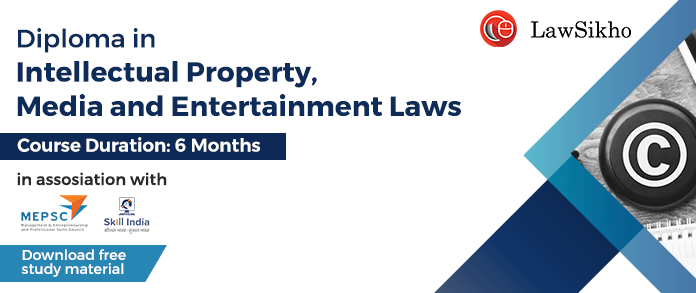This article is written by Anannya Sinha, pursuing BBA-LLB from Symbiosis Law School, Noida. In this article, she talks about protective discrimination that is practised in India and the need for this discrimination.
Table of Contents
Background and meaning of protective discrimination
India has had a long past of oppression and suppression. Certain communities have always been discriminated against, whether it be in the puranic times, the era of monarchy or British rule. These communities were exploited for long and their sufferings have been silenced by the influential non-discriminated people of the society. They were so underprivileged that they lost all financial authority and were forced to live a life of poverty for generations after generations.
The makers of the Indian Constitution dreamt of a society where everyone is treated as equal and no one is exploited based on their colour, caste, sex or race. This dream still remains a dream for many. Thus, the makers of the Constitution applied their judicial mind for an affirmative action that would potentially accomplish the desired object. It was the idea of protective discrimination that added a new dimension to a great socio-economic manoeuvre.
The policy of protective discrimination is a way to ensure social justice in society. The scheduled castes, scheduled tribes, other backward classes, and women are the most exploited and discriminated groups in Indian society, and the Constitution hence aims at making their lives better by providing them with some special privileges.
These actions are justifiably enshrined in the Constitution of India as “Protective Discrimination”. Protective Discrimination as an idea has been practised by many civilized nations including developed nations like the USA because of their dark history of racial discrimination.
In India, these special provisions for the downtrodden and exploited are provided as reservations or quotas in educational institutions, jobs, and parliamentary privileges and it commands the legislatures to legislate special provisions for their overall advancement.
Need for protective discrimination for backward classes in India
The Supreme Court in Marri Chandra Sekhar Rao v. Dean Seth G.S Medical College (1990) held that equality must be a living reality for the people. Those who are unequal in status and opportunity cannot be treated by identical standards.
To add to the problem, Indian society discriminates against some communities most prominently based on the institution called the caste system. The caste system is a deep-rooted social problem that dates back centuries ago. Even though the Constitution prohibits discrimination against these groups but, the legal position apart, the caste system is still the order of the day and this is the sad undeniable truth. Lower castes have to serve the upper castes without having any say and grievance redressal mechanism. This inhumane and barbaric condition perpetuated for centuries, till “we the people” realised the malady impelling the legal mechanism to make laws, suggest amendments and make the lives of these people better and try to bring them to the same pedestal that all of us stand on.
Previous protective discrimination laws and provisions in India
Some of the constitutional provisions which aim at positive discrimination are:
- Article 17: Abolition of “untouchability” and making its practice in any form a punishable offence.
- Article 46: Promotion of educational and economic interests.
- Article 16 and 335: Preferential treatment in matters of employment in public services.
- Articles 330 and 332: Reservation of seats in the Lok Sabha and State Assemblies.
Two Constitutional Amendments have been incorporated into Article 16(4). The 77th Amendment to the Constitution has taken effect, allowing Scheduled Castes and Scheduled Tribes to be given preference in promotions. As a result, Parliament has erased the premise that an appointment does not imply promotion, as defined by the Supreme Court in Indira Sawhney, by modifying the Constitution. The 81st Constitutional Amendment also brought changes in Article 16(4)(B), which states that “Nothing in this article shall prevent the State from considering any unfilled vacancies of a year which are reserved for being filled up in that year in accordance with any provision for reservation made under clause(4).”
Article 16(6) was introduced by the Constitution (One Hundred and Third Amendment) Act, 2019, which states that “No government authority or any other person or authority shall prohibit the state from making any laws related to the reservations of economically weaker sections; The laws made for their reservation should not exceed ten percent.”
The Karachi Resolution’s socio-economic provisions influenced the Constituent Assembly’s writing of Part IV of the Indian Constitution, the Directive Principles of State Policy. The Congress believed that to overcome mass exploitation, political freedom must also involve actual economic freedom for the starving millions.
Article 15(3) of the Constitution allows the state to make special laws for women and children and Article 15(4) allows the state to make laws and provisions for the socially and economically backward classes for their improvement. Article 15(5) enables the state to make reservations in educational institutions.
Further, Articles 15 and 16 deal with reservations for these economically and socially backward classes for their upliftment.
Article 336 provides for the protection of rights of the Anglo-Indian Community in appointments in various sectors including railways, postal services, and customs.
Reservation and protective discrimination – is it a permanent right granted to the backward classes?
Who can disagree that working for the government is both a luxury and an opportunity for any underprivileged individual to advance economically and socially? Apparently, in light of this crucial element, the demands of members of the scheduled castes, among others, will be considered compatible with the maintenance of administrative efficiency, in the making of appointments to services and posts concerning the activities of the union or a state, according to Article 335 of our Constitution.
The Supreme Court in All India Anna Dravida Munnetra v. Union Of India (2020) refused to accept a series of petitions demanding the implementation of a 50% reservation for “Other Backward Classes (OBCs)” in state-funded seats in the all-India quota for UG and PG medical courses in TamilNadu, stating that “reservation is not a fundamental right.” The Apex Court has held multiple times this year in a series of decisions that reservation is not a fundamental right.
Hence, the right to receive reservation in government offices, educational institutions and various other organisations is at the discretion of the law-making bodies and not a permanent right that people from the socially and economically backward sections of the society can demand.
Creamy layer concept
In Indian politics, the term “creamy layer” refers to some members of a backward class who are highly progressed socially, economically, and educationally. They are the most forward-thinking members of that backward class, as forward-thinking as any other forward-thinking members. The word was first used in the Indra Sawhney case (1992) to refer to the reservation of jobs for certain groups in 1992.
The classification for differentiating the creamy layer from that of the rest of the community is the family income. This classification is valid and applicable for the OBC community only. Those from scheduled castes (SCs) and scheduled tribes (STs) are exempted from this classification, and always receive the benefits of reservation, regardless of family income.
This has always been an issue of debate. People who do not obtain such reservations, as well as many others, believe that even the ST-SC community should be included in the creamy layer policy before receiving any additional benefits such as reservations. What they fail to consider is the constant stereotype and mental agony that accompanies them to date because of the prevailing casteism in Indian society. This only pertained to reservations in promotion; the rest remained unchanged. The federal government filed a new appeal at the Supreme Court in December 2019.
Important case laws related to protective discrimination
In Mohan Kumar Singhania v. Union of India (1991), the Supreme Court explained that Article 16(4) is an enabling article that gives the state freedom to make any provision or reservation for any backward class of citizens that is not adequately represented in the state’s service. The state government takes the total population of the backward class and their representation in state services, does the appropriate calculations, and then makes the reservation and provides the percentage of reservation for the posts, which must be carefully adhered to.
In Triloki Nath v. J & K State (II) Shah (1973), the bench stated that ‘a test primarily based on caste, community, race, religion, sex, descent, place of birth, or residency cannot be used to determine whether a section represents a class for the purposes of Article 16 (4) since it would directly violate the Constitution.’
In A. Peeriakaruppan, etc. v. State of Tamil Nadu (1970), the Supreme Court stated that ‘A caste has traditionally been considered a social group. If an entire caste or community is socially, economically, or educationally backward at any given period, that caste or group is considered a backward class. This is because they form a class, not because they are members of that caste or group.
In the case of Jagdish Negi v. State of U.P (1997), it was stated that backwardness is not a one-time occurrence. It can’t go on indefinitely, and the government has the right to examine the issue at any point.
Conclusion
The Constitution of India, through various laws and provisions, aims at eliminating disparities between different sections of the society and providing equality of status and opportunity to all. In India, there is a growing discussion about positive discrimination. A democracy, on the other hand, is not restricted by logic or ethics because it is fundamentally a social creation. A nation cannot flourish if a significant portion of its population falls behind in the development race and, as a result, is unable to benefit from the equality of opportunity granted to all Indian citizens as a fundamental right.
The long-disputed challenge of preserving the rights of both historically oppressed and socially and economically disadvantaged individuals, as well as the privileged section, has long been debated. Because of its hierarchical hierarchy and brutal caste system, India has a grim history of oppression and violence. Even though the country and we Indians have been independent for seventy-four years and even as we Indians enter the age of liberalization and globalization, the social system and mindset of the masses have remained the same.
Understanding the very nature of the society, there should be different laws, applying differently in different places and circumstances. Application of the same laws parallel to everyone irrespective of socio-economic differences may result in violation of the spirit of the right to equality.
Henceforth, protective discrimination, as a constitutional tenet for protection and preservation of the rights of scheduled castes, scheduled tribes, and other backward classes of citizens as well as women, is highly recommended in our society. Let us hope that the authorities in charge rise to the occasion and ensure an accelerated intake of these people into government services and posts by closing all loopholes.
References
- https://www.tribuneindia.com/news/comment/protective-discrimination-layer-by-layer-165112
- https://www.aequivic.in/post/aijacla-protective-discrimination-under-the-constitution-of-india
- http://www.legalservicesindia.com/article/846/Protective-Discrimination.html
- http://www.legalserviceindia.com/legal/article-4614-protective-discrimination-in-favor-of-backward-classes-under-the-indian-constitution.htm
LawSikho has created a telegram group for exchanging legal knowledge, referrals, and various opportunities. You can click on this link and join:
 Serato DJ Crack 2025Serato DJ PRO Crack
Serato DJ Crack 2025Serato DJ PRO Crack











 Allow notifications
Allow notifications



